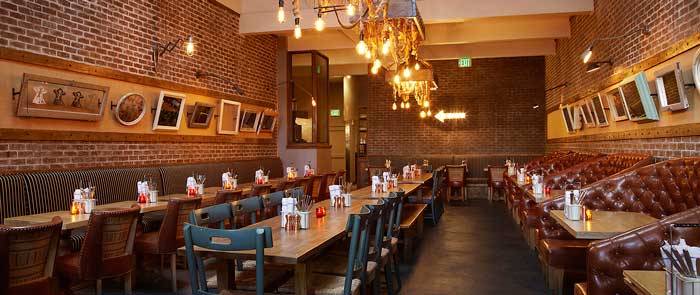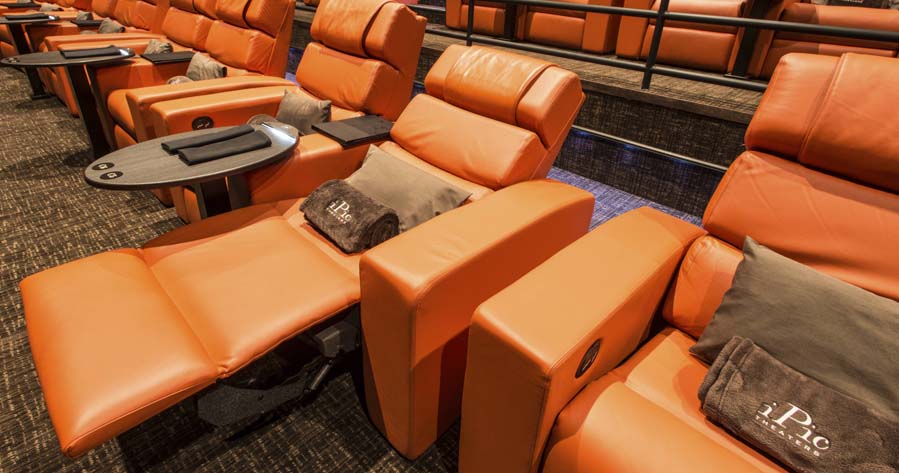You can define any kind of business by what transaction is involved. The customer pays money for goods or services, or in the case of not-for-profits, money is exchanged for an emotional reason, or goodwill.
Restaurants inherently involve all three (goods, services, and emotions) in the transaction.
Goods, Services & Emotions
Customers pay to receive a good: the food prepared for them. Many times the food is a custom job, tailored to the taste of the guest, or their dietary needs. I won't dwell on all aspects of food.
The service customers receive is not just customer service in general, but also ordering suggestions, order taking, delivery to the table, processing the check, and everything in between.
Consumers also receive and retain an emotional experience at the restaurant. The atmosphere (location, architecture, lighting, music, people, food, plating, service received, friends you are with, and more) gives us an emotional response, and we store that away as a memory. We remember an experience at a restaurant, not just the food. It is only a small part of the overall memory. We don't even remember the taste, necessarily, but the feeling.

We get not only an emotional experience with the atmosphere, food, and friends, but also with the business providing it. That's why we remember the people there. And it's another reason why we become regulars. Paul Barron in his book "The Chipotle Effect", says "consumers want an authentic relationship with the people who are selling them things including food. Especially food, because what's more important than the stuff we put into our bodies?". Consumers engage and follow brands on social media as an extension of the experience, as an emotional connection to the business.
Very few other businesses offer all 3 in as extensively as a restaurant does. I'll hit on some similar outliers at the end of the article.
Costs
Restaurant costs follow a pretty standard formula: 30% of revenue is paid out in labor, 30% goes to food, and 30% goes to rent, taxes, etc. The 10% sliver on the end is profit. Restaurants have almost no wiggle room when it comes to sacrificing in one area to spend on another (or take as profit). Rent and other fixed costs are non-negotiable, unless you inherit a building from a rich aunt.
Attempting to pay less for food means sacrificing food quality. Many fast food chains are built on bulk orders for meat, vegetables, and other foods, and by their volume ordering they save millions per year. But also quality is sacrificed because the best quality is seldom bought in bulk. It's difficult to source quality meats, fruits, and vegetables in predictable, sustainable ways when buying in bulk. The fact that a volume purchase is made means that corners are being cut somewhere. Cheap food is cheap food. And if you're buying Wagyu beef, you're passing that cost on to the consumer. So it will still be 30%. There's just no wiggle room for food.

Sacrificing on staff means customer service will suffer. Fewer staff means stressed out staff - overworked, and spread thin. Customers will have longer waits for interactions, and those interactions will not be high quality, because the server has so many tables to cover and remember. Again, large chains have some leverage here, because staff can be hired cheaply and trained quickly, and frequent turnover is expected. It's not a struggle to find inexperienced people to bus tables or flip burgers for minimum wage, with no expectation of tips. I got hired this way. I knew nothing, got trained fast, but hung around too long. I later moved on to retail. Fast food to many servers is no career, but a stepping stone to a different career, or just a paycheck. And a high level of customer service is not expected from a fast food worker. The small things I did above and beyond were rewarded well, simply because it was not expected. If I had been a server at a non-fast food restaurant, that level of service would have been in the job description. For my job, it was not. Sacrificing staff means sacrificing customer service and experience.
Emotional experience provided to customers can be a cost, but is only expressed on the balance sheet in derivative ways. It's part food, part staff, and part fixtures. And some of it the customer brings with them for free: friends, expectations, and surprises.
There's just not much restaurants can do to save in any of the three areas without damaging their business. Restaurants are special in this way.
Similar Outliers
Outliers in this case are where the good, service, and strong emotional connection are provided in the transaction. But they differ from restaurants in that there is much room for savings involved in their expenses.
Luxury retailers (Hermes, Gucci, Burberry, Tiffany): they provide exquisite goods, exceptional customer service, and the emotions involved in shopping for and owning a luxury good. The reason they are so profitable? The markup is outrageous. That $3,500 bag may have quality leather and craftsmanship, but definitively not even close to $3,500 worth. Most of the cost is marketing and retail space, but there's still a hefty amount left over. And staff are not paid 100 times the normal wage a restaurant server gets. So they aren't hitting 30% expense on staff.
Movie theaters: goods (popcorn, drinks), service (movie and customer service), and emotional experience (the movie content itself, sharing time with loved ones, etc). Movie theaters are bouncing back in finding new ways to cater (literally) to consumer preferences. You can now get lattes, ice cream, and all sorts of surprising goodies at a modern theater. Movie theaters, for the longest time, had depended on the large markup of popcorn and soda for their survival. With the large markups still in place, they have more room than restaurants as far as cutting expenses. Staff is still one place where it doesn't compare to your neighborhood restaurant. No one goes to a movie theater for the customer service unless it's an upscale theater like iPic Theaters that features comfy recliners, chair-side ordering, and a dinner-theater style atmosphere (and it's fantastic). This takes a special kind of staff compared to mainstream theaters which can hire unskilled minimum wage workers and train them quickly.

Closing Note
I don't mean to come down on minimum wage workers (I was one) to say that they are less than a non-minimum wage worker. I just mean that they are easily replaced if all an employer is looking for is someone it to train in an afternoon or a week's time. Turnover and hiring are less of a challenge. It doesn't take weeks to find a good replacement.
Also, fast food doesn't mean bad quality. I love me some fast food. But I won't live off of it.

